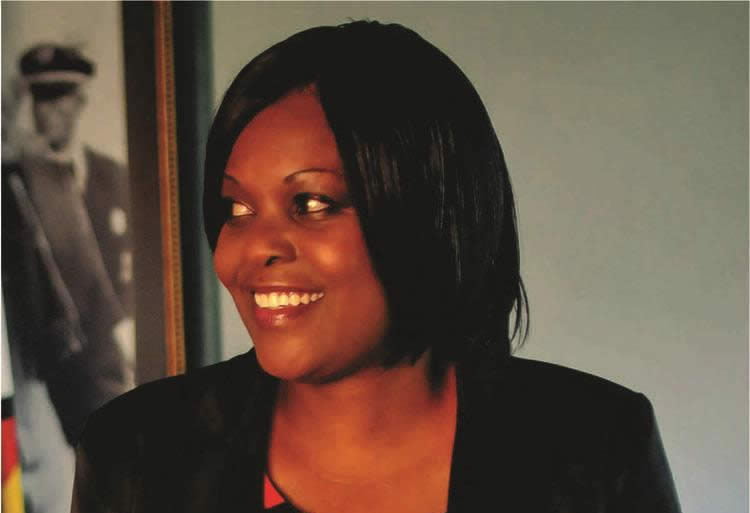Fare thee well, Master Pashapa
Knowledge Mushohwe Correspondent
In August 2003, the newly-established Chinhoyi University of Technology welcomed about a dozen new students to the Faculty of Life Long Learning. The students were to begin a four-year journey that would end with the conferment of an honours degree in Creative Art and
Design. Hundreds of students have since walked over those first footsteps on their way to becoming accomplished artists.
The degree, the first and only one of its kind in Zimbabwe, was the brainchild of Petros Pashapa, who passed away earlier this week at a Harare hospital after a long illness.
Pashapa, in consultation with other educationists and some industrialists, came up with a framework that divided the degree into five different categories – theory, practical, research and industrial attachment, specialisation and exhibition.
The theoretical aspect of the degree gives students an appreciation of art history and aesthetics, with a deliberate bias towards African art history.
Students would learn that while European art has almost always been for commercial purposes, African creativity was originally designed for the community and served ritual, decorative and religious needs.
Practical courses form the core of the degree.
“Papa P”, as he was fondly known by students, would often say: “if you can draw something and what you develop looks exactly like the original, I won’t be impressed, because I know a device that can do a better job faster and cheaper. It is called a camera. If you want to impress me, create an artwork that no camera in the world can replicate.”
The late art educationist emphasised the need for originality in all creative, stylistic expressions.
Pashapa formulated a degree course that ensured that the student undertakes lessons in a variety of art genres such as sculpture, design, photography, ceramics, printmaking, film, theatre, fashion and textiles.
His vision and hard work created the “complete” artist with knowledge and experience in multiple disciplines.
Some of the students Pashapa’s project attracted, such as Munyaradzi Mazarire, Gareth Nyandoro, Brian Muchenwa, Tafadzwa Gwetai and Thina Bhebhe were already accomplished visual artists but it was the degree that raised their profile and created the opportunities that come their way.
Pashapa did not just develop a degree framework and closed the door on improvements.
He realised that the majority of his students ended up in the advertising industry and wisely introduced an advertising course as part of the practicals.
Industrial attachment was designed to give students work experience under industry conditions while a research project tests students’ information gathering, tabulation and interpretation techniques while encouraging them to do more in a field that Pashapa himself lamented was underdeveloped.
It is at specialisation stage that the degree funnels into small packets of specific projects and students start to develop skills and techniques that will become useful after school.
Specialisation, according to Pashapa, is the dress rehearsal of the student’s rest of his professional life.
Exhibition, the last part of the degree, is merely a celebration of the time spent at Chinhoyi University of Technology, and the Department of Art and Design tests students’ event management and curatorship skills as they parade the best of the works they would have produced throughout their studies and under a uniting theme.
Though each of his classes typically consisted of three kinds of students – the novice fresh out of high school, the experienced artist with little or no formal training and the art teacher looking to get a better qualification and by extension a better life – the degree would somehow integrate and unite all of them.
Pashapa’s vision created a flurry of professional artists dotted all over advertising agencies, the media and other creative businesses in Zimbabwe and in neighbouring countries.
Others such as Kudzai Chikomo and Muchenwa have become entrepreneurs in their own right, evidence that the degree is a stepping stone for future success.
Even though Pashapa’s health failed him in his last days, he continued to contribute towards the further development of the degree.
In death, Pashapa will be remembered by the multitude of art students that passed through CUT as a father figure that employed an open door policy, entertaining even those that needed help on personal matters.
Pashapa mentored generations of artists and his contribution to the art industry is immense.
He was born in Murehwa in 1951 and trained as a teacher at College of Christ (Daramombe) before studying for a Fine Arts qualification in Kitwe, Zambia, in 1983.
On return, Pashapa briefly taught Art at Lord Malvern School in Harare then served as a lecturer, principal lecturer and head of the art department at Mkoba Teachers’ College from 1985.
He later completed an art degree and a masters degree in art education at the University of Zimbabwe.
He joined Women’s University in 2002 and a year later, he made the inspired decision to join Chinhoyi University of Technology.
At Chinhoyi, Pashapa was the aesthetics lecturer and held positions that included dean of the Faculty of Life Long Learning and dean of the School of Art and Design.
Pashapa has published several art-related papers and articles, and has presented many of them at seminars and conferences.
He published two books – ‘Talking About Art’ and “Development in Graphic Representation in Children Between 5 and 13 Years”.
Pashapa’s death should inspire the current art and design team led by Drs Bere and Samwanda to continue to improve the degree he created.
Pashapa’s hard work had already produced so many positive results and the art fraternity certainly expects a lot more every year.
Rest in peace, “Papa P”.




Comments